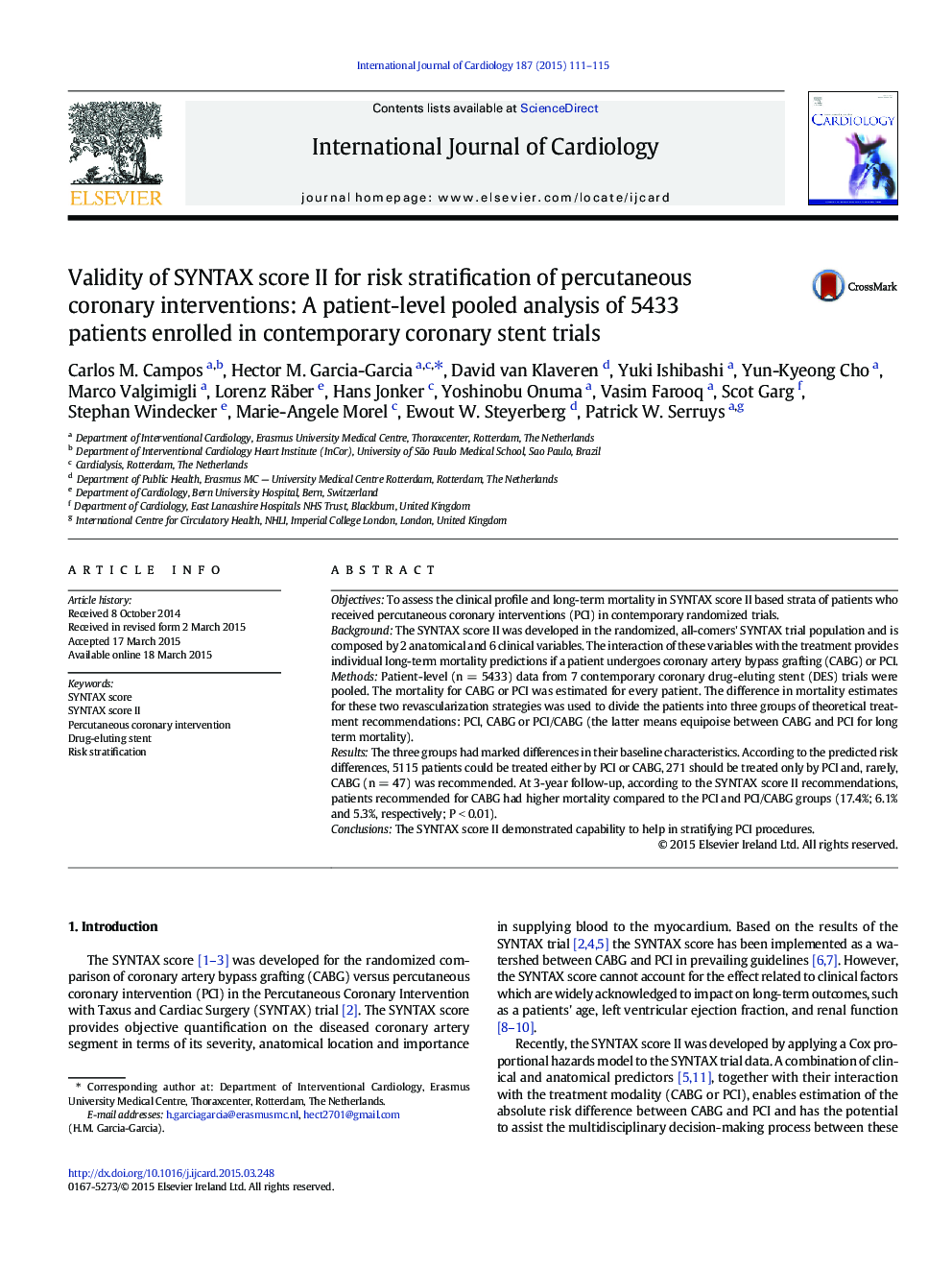| کد مقاله | کد نشریه | سال انتشار | مقاله انگلیسی | نسخه تمام متن |
|---|---|---|---|---|
| 5967895 | 1576165 | 2015 | 5 صفحه PDF | دانلود رایگان |

ObjectivesTo assess the clinical profile and long-term mortality in SYNTAX score II based strata of patients who received percutaneous coronary interventions (PCI) in contemporary randomized trials.BackgroundThe SYNTAX score II was developed in the randomized, all-comers' SYNTAX trial population and is composed by 2 anatomical and 6 clinical variables. The interaction of these variables with the treatment provides individual long-term mortality predictions if a patient undergoes coronary artery bypass grafting (CABG) or PCI.MethodsPatient-level (n = 5433) data from 7 contemporary coronary drug-eluting stent (DES) trials were pooled. The mortality for CABG or PCI was estimated for every patient. The difference in mortality estimates for these two revascularization strategies was used to divide the patients into three groups of theoretical treatment recommendations: PCI, CABG or PCI/CABG (the latter means equipoise between CABG and PCI for long term mortality).ResultsThe three groups had marked differences in their baseline characteristics. According to the predicted risk differences, 5115 patients could be treated either by PCI or CABG, 271 should be treated only by PCI and, rarely, CABG (n = 47) was recommended. At 3-year follow-up, according to the SYNTAX score II recommendations, patients recommended for CABG had higher mortality compared to the PCI and PCI/CABG groups (17.4%; 6.1% and 5.3%, respectively; P < 0.01).ConclusionsThe SYNTAX score II demonstrated capability to help in stratifying PCI procedures.
Journal: International Journal of Cardiology - Volume 187, 6 May 2015, Pages 111-115